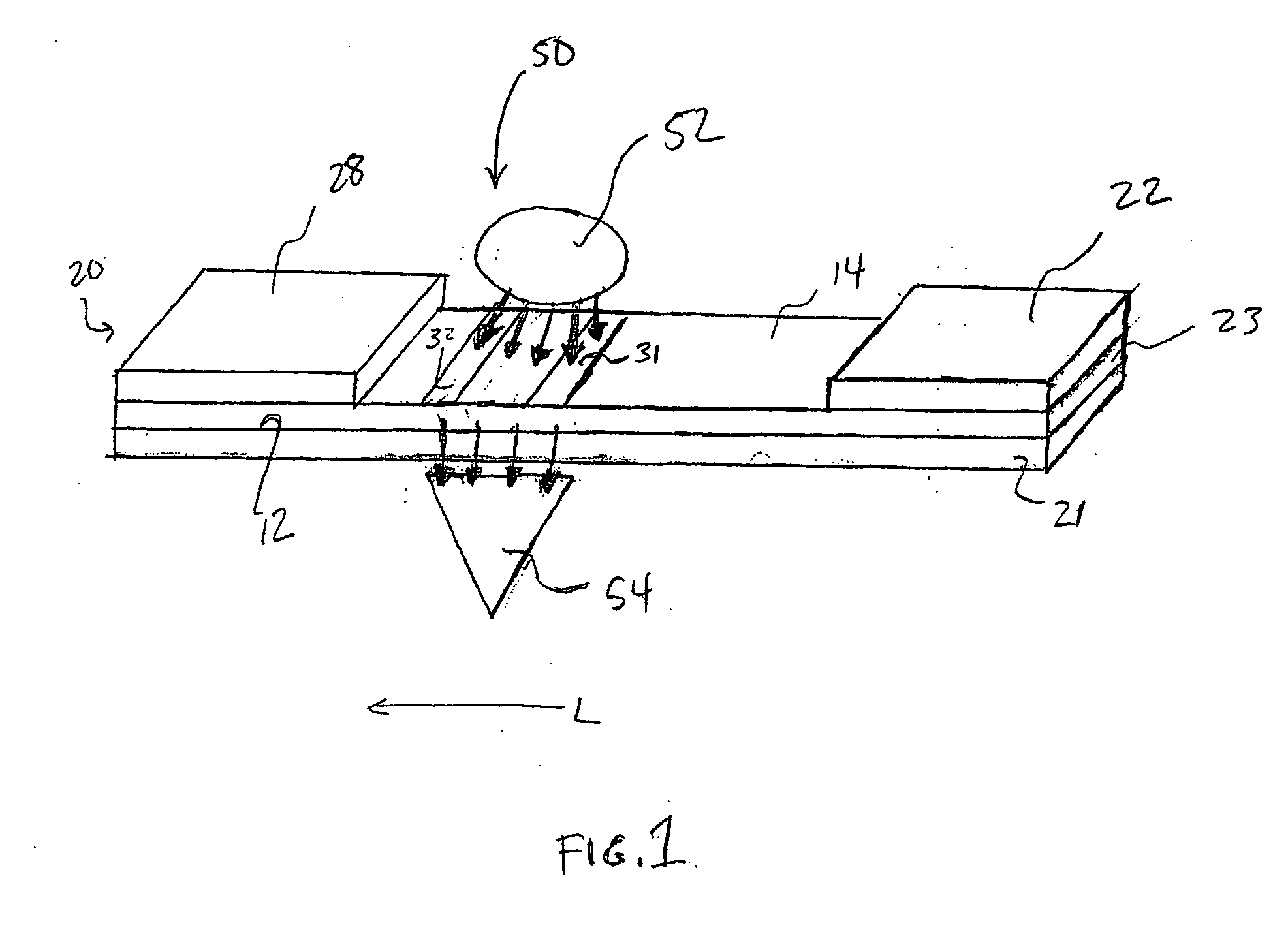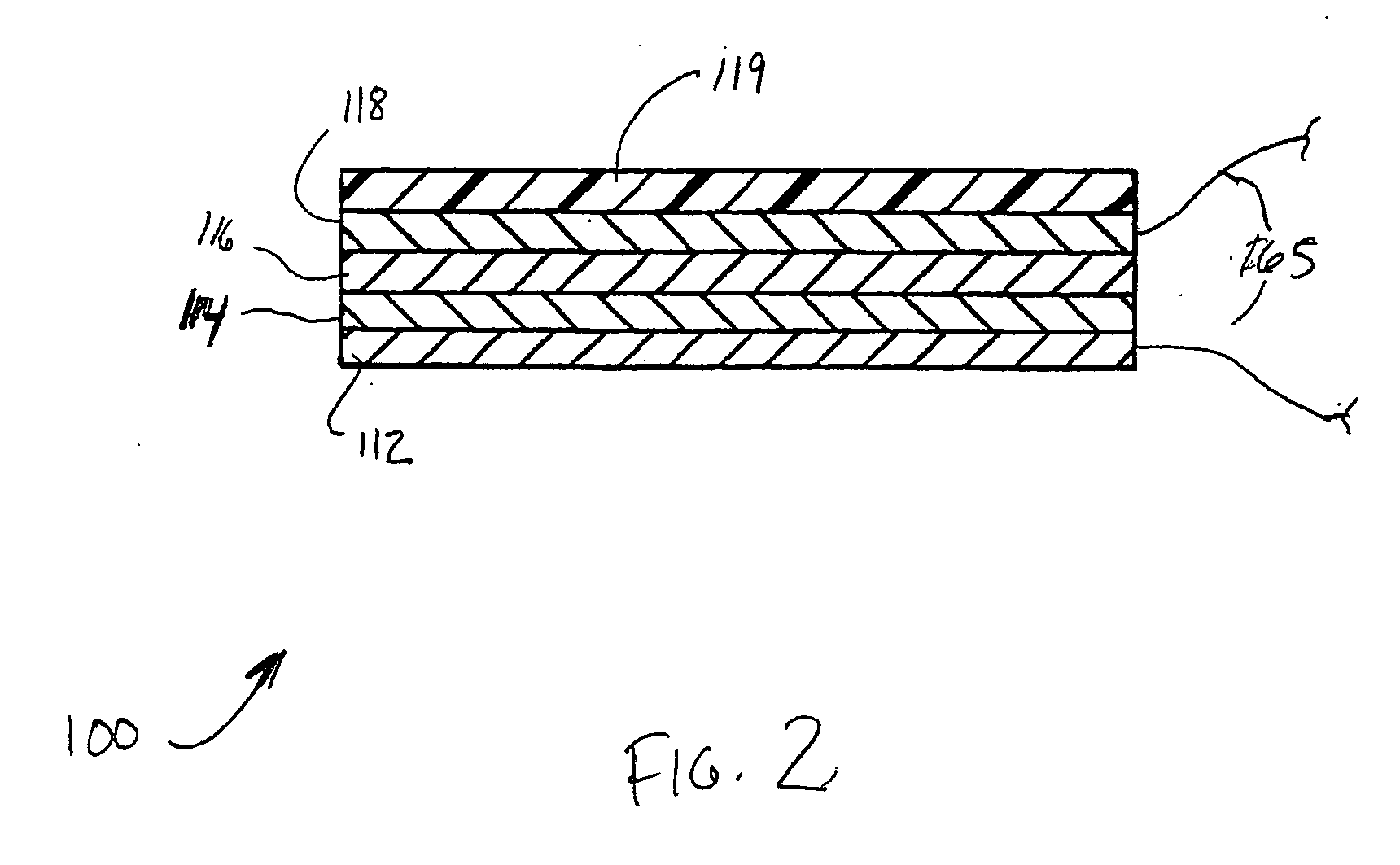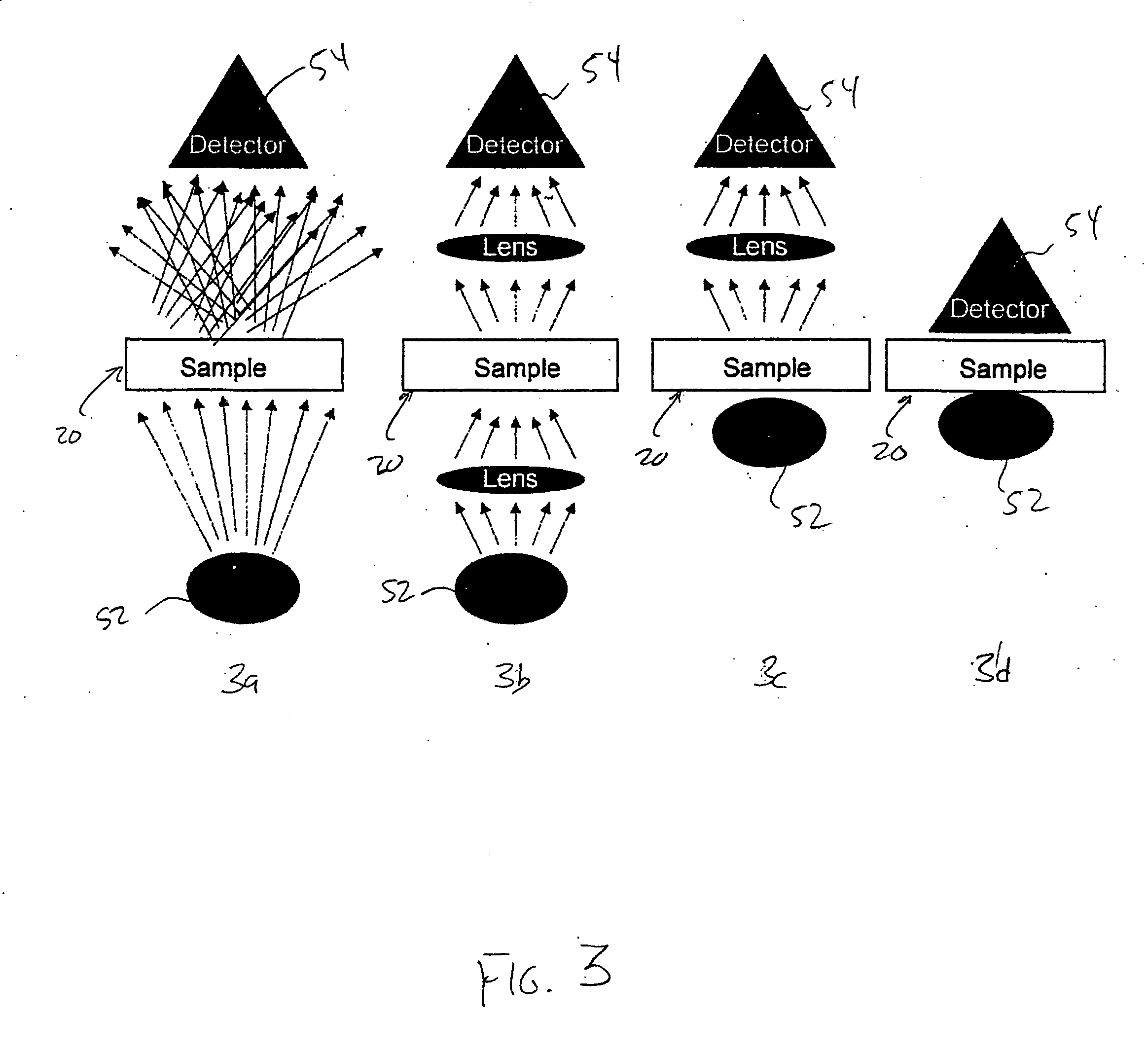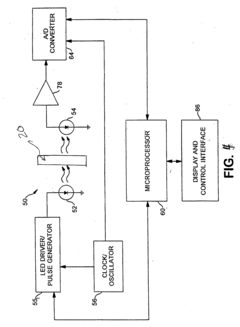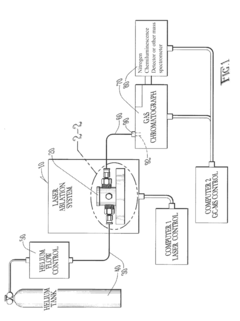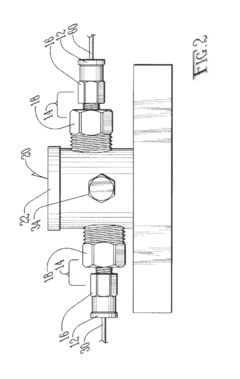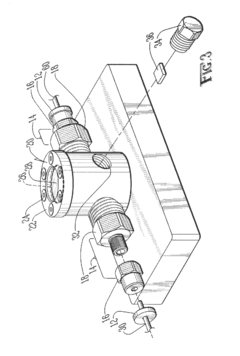Future Trends in Luminol-Based Detection Systems
AUG 19, 20259 MIN READ
Generate Your Research Report Instantly with AI Agent
Patsnap Eureka helps you evaluate technical feasibility & market potential.
Luminol Detection Evolution
Luminol-based detection systems have undergone significant evolution since their inception in the early 20th century. Initially discovered as a chemiluminescent compound in 1928, luminol's potential for forensic and analytical applications was quickly recognized. The early stages of luminol detection primarily focused on its use in crime scene investigations, particularly for detecting traces of blood.
In the 1950s and 1960s, researchers began to explore the broader applications of luminol beyond forensics. This period saw the development of more sensitive and specific luminol formulations, as well as improved techniques for applying and documenting luminol reactions. The introduction of photography and later, digital imaging technologies, greatly enhanced the ability to capture and analyze luminol-based evidence.
The 1970s and 1980s marked a significant leap in luminol detection technology with the advent of automated systems. These systems combined luminol chemistry with advanced instrumentation, allowing for more precise and quantitative measurements. This era also saw the expansion of luminol applications into environmental monitoring, food safety testing, and medical diagnostics.
The 1990s and early 2000s brought about a revolution in luminol detection with the integration of molecular biology techniques. This led to the development of enhanced chemiluminescent systems, where luminol was coupled with enzymes or other biological molecules to create highly sensitive and specific detection assays. These advancements opened up new possibilities in fields such as immunoassays, DNA detection, and protein analysis.
In recent years, the evolution of luminol-based detection has been driven by nanotechnology and advanced materials science. Researchers have developed nanoparticle-enhanced luminol systems that offer unprecedented sensitivity and selectivity. These innovations have enabled the detection of trace amounts of analytes in complex matrices, pushing the boundaries of what was previously possible with traditional luminol methods.
The integration of luminol detection with microfluidic devices and lab-on-a-chip technologies represents another significant milestone. These miniaturized systems allow for rapid, on-site analysis with minimal sample volumes, making luminol-based detection more accessible and applicable in field settings.
Looking towards the future, the evolution of luminol detection is likely to continue along several key trajectories. Advancements in artificial intelligence and machine learning are expected to enhance data analysis and interpretation of luminol-based signals, potentially leading to more accurate and automated detection systems. Additionally, the development of novel luminol derivatives and hybrid chemiluminescent compounds may further expand the range of detectable analytes and improve overall system performance.
In the 1950s and 1960s, researchers began to explore the broader applications of luminol beyond forensics. This period saw the development of more sensitive and specific luminol formulations, as well as improved techniques for applying and documenting luminol reactions. The introduction of photography and later, digital imaging technologies, greatly enhanced the ability to capture and analyze luminol-based evidence.
The 1970s and 1980s marked a significant leap in luminol detection technology with the advent of automated systems. These systems combined luminol chemistry with advanced instrumentation, allowing for more precise and quantitative measurements. This era also saw the expansion of luminol applications into environmental monitoring, food safety testing, and medical diagnostics.
The 1990s and early 2000s brought about a revolution in luminol detection with the integration of molecular biology techniques. This led to the development of enhanced chemiluminescent systems, where luminol was coupled with enzymes or other biological molecules to create highly sensitive and specific detection assays. These advancements opened up new possibilities in fields such as immunoassays, DNA detection, and protein analysis.
In recent years, the evolution of luminol-based detection has been driven by nanotechnology and advanced materials science. Researchers have developed nanoparticle-enhanced luminol systems that offer unprecedented sensitivity and selectivity. These innovations have enabled the detection of trace amounts of analytes in complex matrices, pushing the boundaries of what was previously possible with traditional luminol methods.
The integration of luminol detection with microfluidic devices and lab-on-a-chip technologies represents another significant milestone. These miniaturized systems allow for rapid, on-site analysis with minimal sample volumes, making luminol-based detection more accessible and applicable in field settings.
Looking towards the future, the evolution of luminol detection is likely to continue along several key trajectories. Advancements in artificial intelligence and machine learning are expected to enhance data analysis and interpretation of luminol-based signals, potentially leading to more accurate and automated detection systems. Additionally, the development of novel luminol derivatives and hybrid chemiluminescent compounds may further expand the range of detectable analytes and improve overall system performance.
Forensic Market Analysis
The forensic market has experienced significant growth in recent years, driven by increasing crime rates, technological advancements, and a growing emphasis on evidence-based investigations. Luminol-based detection systems play a crucial role in this market, particularly in the field of blood detection and crime scene investigation.
The global forensic technologies market, which includes luminol-based detection systems, is projected to reach substantial value in the coming years. This growth is attributed to the rising demand for advanced forensic tools and techniques across law enforcement agencies, forensic laboratories, and research institutions. The market for luminol-based detection systems specifically is expected to witness steady growth due to its effectiveness in detecting trace amounts of blood and its wide application in criminal investigations.
Geographically, North America dominates the forensic market, followed by Europe and Asia-Pacific. The United States, in particular, holds a significant market share due to its advanced forensic infrastructure and high adoption rate of innovative technologies. However, emerging economies in Asia-Pacific and Latin America are showing rapid growth potential, driven by increasing government investments in forensic sciences and rising awareness about the importance of advanced forensic techniques.
The luminol-based detection systems market is characterized by intense competition among key players, including established forensic equipment manufacturers and emerging startups. These companies are focusing on research and development to enhance the sensitivity and specificity of luminol-based detection methods, as well as to develop portable and user-friendly devices for on-site investigations.
One of the key trends shaping the market is the integration of luminol-based detection systems with other advanced technologies such as spectroscopy, imaging, and artificial intelligence. This integration aims to improve the accuracy of blood detection and provide more comprehensive forensic analysis. Additionally, there is a growing demand for multipurpose forensic kits that include luminol-based reagents along with other detection tools, offering a complete solution for crime scene investigators.
The market is also witnessing a shift towards eco-friendly and non-toxic alternatives to traditional luminol formulations. This trend is driven by increasing environmental concerns and the need for safer handling of forensic chemicals. As a result, research is being conducted to develop bio-based luminol alternatives that maintain high sensitivity while reducing potential health and environmental risks.
The global forensic technologies market, which includes luminol-based detection systems, is projected to reach substantial value in the coming years. This growth is attributed to the rising demand for advanced forensic tools and techniques across law enforcement agencies, forensic laboratories, and research institutions. The market for luminol-based detection systems specifically is expected to witness steady growth due to its effectiveness in detecting trace amounts of blood and its wide application in criminal investigations.
Geographically, North America dominates the forensic market, followed by Europe and Asia-Pacific. The United States, in particular, holds a significant market share due to its advanced forensic infrastructure and high adoption rate of innovative technologies. However, emerging economies in Asia-Pacific and Latin America are showing rapid growth potential, driven by increasing government investments in forensic sciences and rising awareness about the importance of advanced forensic techniques.
The luminol-based detection systems market is characterized by intense competition among key players, including established forensic equipment manufacturers and emerging startups. These companies are focusing on research and development to enhance the sensitivity and specificity of luminol-based detection methods, as well as to develop portable and user-friendly devices for on-site investigations.
One of the key trends shaping the market is the integration of luminol-based detection systems with other advanced technologies such as spectroscopy, imaging, and artificial intelligence. This integration aims to improve the accuracy of blood detection and provide more comprehensive forensic analysis. Additionally, there is a growing demand for multipurpose forensic kits that include luminol-based reagents along with other detection tools, offering a complete solution for crime scene investigators.
The market is also witnessing a shift towards eco-friendly and non-toxic alternatives to traditional luminol formulations. This trend is driven by increasing environmental concerns and the need for safer handling of forensic chemicals. As a result, research is being conducted to develop bio-based luminol alternatives that maintain high sensitivity while reducing potential health and environmental risks.
Luminol Challenges
Despite its widespread use in forensic science and biomedical research, luminol-based detection systems face several significant challenges that limit their effectiveness and reliability. One of the primary issues is the lack of specificity in luminol reactions. While luminol is highly sensitive to the presence of blood, it can also react with other substances, leading to false-positive results. This cross-reactivity with common household chemicals, plant peroxidases, and certain metals can complicate crime scene investigations and compromise the integrity of evidence.
Another major challenge is the potential for luminol to interfere with subsequent DNA analysis. The chemical reaction that produces the characteristic blue glow can potentially degrade or alter DNA present in blood samples. This interference poses a significant problem for forensic investigators who rely on DNA evidence for identification and prosecution. Balancing the need for visual detection with the preservation of genetic material remains a critical issue in the field.
The stability and longevity of luminol solutions also present ongoing challenges. Once prepared, luminol solutions have a limited shelf life and can degrade rapidly, affecting their performance and reliability. This instability necessitates frequent preparation of fresh solutions, which can be time-consuming and resource-intensive, especially in field applications or remote locations where access to laboratory facilities may be limited.
Environmental factors such as temperature, humidity, and ambient light can significantly impact the effectiveness of luminol-based detection systems. Extreme temperatures can affect the chemical reaction, while high humidity can dilute the solution or cause premature activation. Ambient light can interfere with the visualization of the luminescent reaction, requiring investigators to work in darkened conditions, which may not always be practical or possible in all crime scene scenarios.
The interpretation of luminol test results requires considerable expertise and experience. The intensity and duration of the luminescence can vary depending on numerous factors, including the age of the bloodstain, the surface material, and the presence of contaminants. This variability can lead to misinterpretation of results, especially by less experienced practitioners, potentially compromising investigations or legal proceedings.
Lastly, the development of more sensitive and specific alternative technologies poses a challenge to the continued relevance of luminol-based systems. Emerging techniques such as fluorescent antibody-based assays and advanced spectroscopic methods offer improved specificity and sensitivity. As these new technologies evolve, the forensic and research communities must continually evaluate the role and efficacy of luminol in comparison to these newer methods, balancing traditional practices with innovative approaches.
Another major challenge is the potential for luminol to interfere with subsequent DNA analysis. The chemical reaction that produces the characteristic blue glow can potentially degrade or alter DNA present in blood samples. This interference poses a significant problem for forensic investigators who rely on DNA evidence for identification and prosecution. Balancing the need for visual detection with the preservation of genetic material remains a critical issue in the field.
The stability and longevity of luminol solutions also present ongoing challenges. Once prepared, luminol solutions have a limited shelf life and can degrade rapidly, affecting their performance and reliability. This instability necessitates frequent preparation of fresh solutions, which can be time-consuming and resource-intensive, especially in field applications or remote locations where access to laboratory facilities may be limited.
Environmental factors such as temperature, humidity, and ambient light can significantly impact the effectiveness of luminol-based detection systems. Extreme temperatures can affect the chemical reaction, while high humidity can dilute the solution or cause premature activation. Ambient light can interfere with the visualization of the luminescent reaction, requiring investigators to work in darkened conditions, which may not always be practical or possible in all crime scene scenarios.
The interpretation of luminol test results requires considerable expertise and experience. The intensity and duration of the luminescence can vary depending on numerous factors, including the age of the bloodstain, the surface material, and the presence of contaminants. This variability can lead to misinterpretation of results, especially by less experienced practitioners, potentially compromising investigations or legal proceedings.
Lastly, the development of more sensitive and specific alternative technologies poses a challenge to the continued relevance of luminol-based systems. Emerging techniques such as fluorescent antibody-based assays and advanced spectroscopic methods offer improved specificity and sensitivity. As these new technologies evolve, the forensic and research communities must continually evaluate the role and efficacy of luminol in comparison to these newer methods, balancing traditional practices with innovative approaches.
Current Luminol Techniques
01 Luminol-based detection systems for forensic applications
Luminol-based detection systems are widely used in forensic science for detecting trace amounts of blood at crime scenes. These systems utilize the chemiluminescent properties of luminol when it reacts with the iron in hemoglobin, producing a blue glow that can be observed in dark conditions. The sensitivity of these systems allows for the detection of blood traces that may not be visible to the naked eye, even after attempts to clean or remove evidence.- Luminol-based detection systems for forensic applications: Luminol-based detection systems are widely used in forensic science for detecting trace amounts of blood at crime scenes. These systems utilize the chemiluminescent properties of luminol when it reacts with the iron in hemoglobin, producing a blue glow that can be detected even in highly diluted blood samples. The technology has been improved to enhance sensitivity and reduce interference from other substances.
- Enhanced luminol formulations for improved detection: Researchers have developed enhanced luminol formulations to improve the sensitivity and specificity of blood detection. These formulations may include additives or catalysts that intensify the chemiluminescent reaction, reduce background noise, or extend the duration of the light emission. Some formulations also address issues such as pH sensitivity and stability of the luminol solution.
- Portable luminol-based detection devices: Portable devices incorporating luminol-based detection systems have been developed for on-site forensic analysis. These devices often integrate light sensors, image capture capabilities, and data processing units to provide rapid and reliable blood detection results. Some designs focus on ease of use, durability, and compatibility with other forensic tools.
- Luminol-based systems for environmental and industrial applications: The application of luminol-based detection systems has expanded beyond forensics to environmental monitoring and industrial quality control. These systems can detect trace amounts of certain metals, oxidizing agents, or biological contaminants in water, soil, or industrial processes. Modifications to the basic luminol chemistry allow for selective detection of specific compounds or elements.
- Integration of luminol-based detection with other analytical techniques: Advanced analytical systems have been developed that combine luminol-based detection with other techniques such as spectroscopy, chromatography, or electrochemical analysis. These integrated systems provide more comprehensive and accurate results by leveraging the strengths of multiple analytical methods. Some applications include the detection of explosives, drugs, or biological warfare agents.
02 Enhanced luminol formulations for improved sensitivity
Researchers have developed enhanced luminol formulations to improve the sensitivity and specificity of detection systems. These formulations may include additional reagents or catalysts that amplify the chemiluminescent reaction or reduce interference from other substances. Some improvements focus on extending the duration of the luminescent effect, allowing for better visualization and documentation of blood traces.Expand Specific Solutions03 Portable luminol-based detection devices
Portable devices incorporating luminol-based detection systems have been developed for on-site forensic investigations. These devices often integrate light sensors, cameras, and data processing capabilities to capture and analyze the chemiluminescent reaction. Some portable systems may include features for quantitative analysis of blood traces or the ability to distinguish between human and animal blood.Expand Specific Solutions04 Luminol-based detection in environmental and industrial applications
Beyond forensic science, luminol-based detection systems have found applications in environmental monitoring and industrial processes. These systems can be used to detect trace amounts of metals, pollutants, or other substances in water or soil samples. In industrial settings, luminol-based detection may be employed for quality control or contamination monitoring in manufacturing processes.Expand Specific Solutions05 Integration of luminol-based detection with other analytical techniques
Researchers have explored the integration of luminol-based detection systems with other analytical techniques to enhance their capabilities. This may include combining luminol detection with spectroscopic methods, chromatography, or molecular biology techniques. Such integrated systems aim to provide more comprehensive analysis and identification of trace substances, improving the accuracy and reliability of forensic investigations.Expand Specific Solutions
Key Luminol Manufacturers
The field of luminol-based detection systems is entering a mature phase, with established players and ongoing innovation. The market size is substantial, driven by applications in forensics, medical diagnostics, and environmental monitoring. Technologically, the field is well-developed but continues to evolve. Companies like Life Technologies Corp. and Eastman Kodak Co. have contributed significantly to advancing luminol-based technologies. Research institutions such as Fudan University and the University of Washington are pushing the boundaries of sensitivity and specificity. Emerging players like Cyanagen Srl are introducing novel reagents and detection methods, while industry giants like Canon, Inc. and Sony Group Corp. are integrating luminol-based systems into broader imaging and sensing platforms.
LI-COR, Inc.
Technical Solution: LI-COR has developed advanced luminol-based detection systems for various applications, particularly in life sciences. Their technology utilizes enhanced chemiluminescence (ECL) substrates that significantly improve the sensitivity and dynamic range of Western blot detection[1]. LI-COR's Odyssey imaging systems incorporate near-infrared (NIR) fluorescence detection, which can be combined with luminol-based chemiluminescence for multiplex detection[2]. This dual-mode imaging capability allows researchers to detect multiple targets simultaneously, increasing experimental efficiency and data quality. LI-COR continues to innovate in this field, focusing on improving signal-to-noise ratios and extending the linear dynamic range of luminol-based detection systems[3].
Strengths: High sensitivity, wide dynamic range, and multiplex detection capabilities. Weaknesses: Specialized equipment required, potentially higher cost compared to traditional methods.
Cyanagen Srl
Technical Solution: Cyanagen has made significant strides in luminol-based detection systems, particularly in the development of enhanced chemiluminescent substrates. Their WESTAR series of ECL substrates offers improved sensitivity and longer-lasting signal compared to traditional luminol formulations[1]. Cyanagen's technology focuses on optimizing the chemical composition of the substrates to achieve better performance in Western blotting and other applications. They have introduced novel acridinium-based chemiluminescent labels that provide higher quantum yield and faster kinetics than conventional luminol systems[2]. Cyanagen is also exploring the integration of their chemiluminescent technology with microfluidic devices for point-of-care diagnostics, potentially revolutionizing rapid testing methods[3].
Strengths: High sensitivity, long-lasting signal, and versatility across various applications. Weaknesses: May require optimization for specific experimental conditions.
Luminol Innovations
Transmission-based luminescent detection systems
PatentInactiveUS20060019265A1
Innovation
- A luminescent detection system utilizing a chromatographic-based assay device with luminescent detection probes, an illumination source, and a detector positioned on opposing sides, employing transmission-mode luminescence detection techniques and time-gated detection to minimize background interference and enhance signal sensitivity.
Detection of a component of interest with an ultraviolet laser and method of using the same
PatentInactiveUS20120135537A1
Innovation
- A smaller laser ablation sample cell (0.1 cm3 to 8 cm3) is used in conjunction with a UV laser for desorption, allowing direct analysis without ablation, combined with a gas chromatograph and nitrogen chemiluminescence detector or mass spectrometer, reducing sample loss and eliminating the need for a stationary phase, enabling rapid and selective detection.
Environmental Impact
The environmental impact of luminol-based detection systems is an increasingly important consideration as these technologies become more widespread. While luminol itself is generally considered to have low toxicity, the broader environmental implications of its production, use, and disposal warrant careful examination.
In the manufacturing process of luminol and related chemicals, there are potential environmental concerns related to energy consumption, waste generation, and the use of potentially hazardous precursor materials. As production scales up to meet growing demand, these impacts may become more significant. Industry stakeholders are exploring greener synthesis methods and more sustainable manufacturing practices to mitigate these effects.
The application of luminol-based systems in forensic investigations and crime scene analysis raises questions about the environmental fate of these chemicals when used in outdoor settings. While the quantities used are typically small, repeated applications in natural environments could lead to localized accumulation. Research is ongoing to better understand the degradation pathways and potential ecological effects of luminol and its reaction products in soil and water systems.
Disposal of luminol-containing solutions and contaminated materials presents another environmental challenge. Proper protocols for handling and disposing of these substances are essential to prevent unintended release into the environment. Some jurisdictions are implementing stricter regulations on the disposal of forensic chemicals, including luminol-based products, to address these concerns.
On the positive side, luminol-based detection systems often require smaller sample sizes and less invasive sampling methods compared to traditional analytical techniques. This can lead to reduced waste generation and lower environmental impact in laboratory settings. Additionally, the high sensitivity of luminol-based methods may allow for earlier detection of environmental contaminants, potentially preventing more severe pollution incidents.
Future trends in luminol-based detection systems are likely to focus on enhancing environmental sustainability. This may include the development of bio-based or easily biodegradable luminol analogues, as well as improved formulations that minimize the use of additional reagents. Researchers are also exploring ways to integrate luminol-based detection with green chemistry principles, aiming to create more environmentally friendly forensic and analytical tools.
As the technology evolves, lifecycle assessments of luminol-based systems will become increasingly important. These assessments will help identify areas for improvement in terms of environmental impact and guide the development of more sustainable practices throughout the entire lifecycle of these detection systems.
In the manufacturing process of luminol and related chemicals, there are potential environmental concerns related to energy consumption, waste generation, and the use of potentially hazardous precursor materials. As production scales up to meet growing demand, these impacts may become more significant. Industry stakeholders are exploring greener synthesis methods and more sustainable manufacturing practices to mitigate these effects.
The application of luminol-based systems in forensic investigations and crime scene analysis raises questions about the environmental fate of these chemicals when used in outdoor settings. While the quantities used are typically small, repeated applications in natural environments could lead to localized accumulation. Research is ongoing to better understand the degradation pathways and potential ecological effects of luminol and its reaction products in soil and water systems.
Disposal of luminol-containing solutions and contaminated materials presents another environmental challenge. Proper protocols for handling and disposing of these substances are essential to prevent unintended release into the environment. Some jurisdictions are implementing stricter regulations on the disposal of forensic chemicals, including luminol-based products, to address these concerns.
On the positive side, luminol-based detection systems often require smaller sample sizes and less invasive sampling methods compared to traditional analytical techniques. This can lead to reduced waste generation and lower environmental impact in laboratory settings. Additionally, the high sensitivity of luminol-based methods may allow for earlier detection of environmental contaminants, potentially preventing more severe pollution incidents.
Future trends in luminol-based detection systems are likely to focus on enhancing environmental sustainability. This may include the development of bio-based or easily biodegradable luminol analogues, as well as improved formulations that minimize the use of additional reagents. Researchers are also exploring ways to integrate luminol-based detection with green chemistry principles, aiming to create more environmentally friendly forensic and analytical tools.
As the technology evolves, lifecycle assessments of luminol-based systems will become increasingly important. These assessments will help identify areas for improvement in terms of environmental impact and guide the development of more sustainable practices throughout the entire lifecycle of these detection systems.
Luminol Sensitivity Advancements
Luminol sensitivity advancements have been a key focus in the development of luminol-based detection systems. Over the past decade, significant progress has been made in enhancing the sensitivity and reliability of these systems, opening up new possibilities for their application in various fields.
One of the primary areas of improvement has been in the chemical composition of luminol solutions. Researchers have experimented with different formulations, incorporating additives and catalysts that amplify the chemiluminescent reaction. These modifications have resulted in brighter and longer-lasting luminescence, allowing for the detection of even trace amounts of target substances.
Nanotechnology has played a crucial role in advancing luminol sensitivity. The integration of nanoparticles, such as gold or silver nanoparticles, into luminol-based systems has shown promising results. These nanoparticles act as signal amplifiers, enhancing the overall luminescence intensity and improving the detection limits of the system.
Another significant development has been the optimization of detection instruments. Advanced photomultiplier tubes and charge-coupled devices (CCDs) with higher quantum efficiency have been developed, enabling the capture of weaker luminescent signals. This has greatly improved the overall sensitivity of luminol-based detection systems.
Machine learning and artificial intelligence have also contributed to sensitivity advancements. Sophisticated algorithms have been developed to analyze luminol-generated signals, reducing background noise and enhancing signal-to-noise ratios. This has led to more accurate and reliable detection, even in complex sample matrices.
The miniaturization of luminol-based detection systems has been another area of focus. Microfluidic devices and lab-on-a-chip technologies have been developed, allowing for the integration of sample preparation, luminol reaction, and signal detection in a single, compact platform. This not only improves sensitivity but also enables on-site and real-time analysis.
Researchers have also explored the use of alternative substrates and reaction conditions to enhance luminol sensitivity. For instance, the use of porous materials as reaction substrates has shown to increase the surface area for luminol reactions, resulting in improved sensitivity and detection limits.
Looking ahead, the future of luminol sensitivity advancements appears promising. Emerging technologies such as quantum dots and graphene-based materials are being investigated for their potential to further enhance luminol chemiluminescence. These materials offer unique optical and electronic properties that could revolutionize the sensitivity of luminol-based detection systems.
One of the primary areas of improvement has been in the chemical composition of luminol solutions. Researchers have experimented with different formulations, incorporating additives and catalysts that amplify the chemiluminescent reaction. These modifications have resulted in brighter and longer-lasting luminescence, allowing for the detection of even trace amounts of target substances.
Nanotechnology has played a crucial role in advancing luminol sensitivity. The integration of nanoparticles, such as gold or silver nanoparticles, into luminol-based systems has shown promising results. These nanoparticles act as signal amplifiers, enhancing the overall luminescence intensity and improving the detection limits of the system.
Another significant development has been the optimization of detection instruments. Advanced photomultiplier tubes and charge-coupled devices (CCDs) with higher quantum efficiency have been developed, enabling the capture of weaker luminescent signals. This has greatly improved the overall sensitivity of luminol-based detection systems.
Machine learning and artificial intelligence have also contributed to sensitivity advancements. Sophisticated algorithms have been developed to analyze luminol-generated signals, reducing background noise and enhancing signal-to-noise ratios. This has led to more accurate and reliable detection, even in complex sample matrices.
The miniaturization of luminol-based detection systems has been another area of focus. Microfluidic devices and lab-on-a-chip technologies have been developed, allowing for the integration of sample preparation, luminol reaction, and signal detection in a single, compact platform. This not only improves sensitivity but also enables on-site and real-time analysis.
Researchers have also explored the use of alternative substrates and reaction conditions to enhance luminol sensitivity. For instance, the use of porous materials as reaction substrates has shown to increase the surface area for luminol reactions, resulting in improved sensitivity and detection limits.
Looking ahead, the future of luminol sensitivity advancements appears promising. Emerging technologies such as quantum dots and graphene-based materials are being investigated for their potential to further enhance luminol chemiluminescence. These materials offer unique optical and electronic properties that could revolutionize the sensitivity of luminol-based detection systems.
Unlock deeper insights with Patsnap Eureka Quick Research — get a full tech report to explore trends and direct your research. Try now!
Generate Your Research Report Instantly with AI Agent
Supercharge your innovation with Patsnap Eureka AI Agent Platform!
